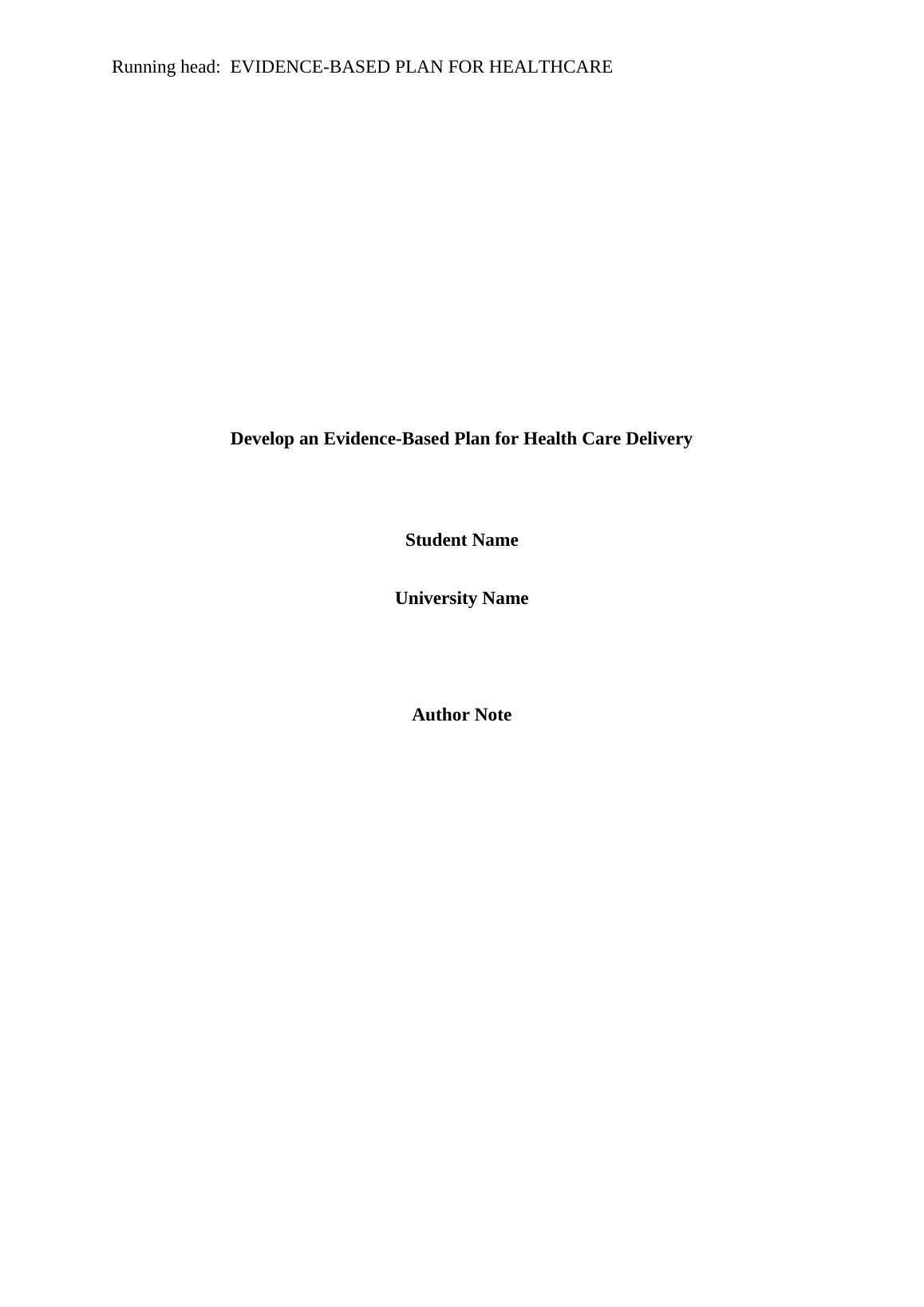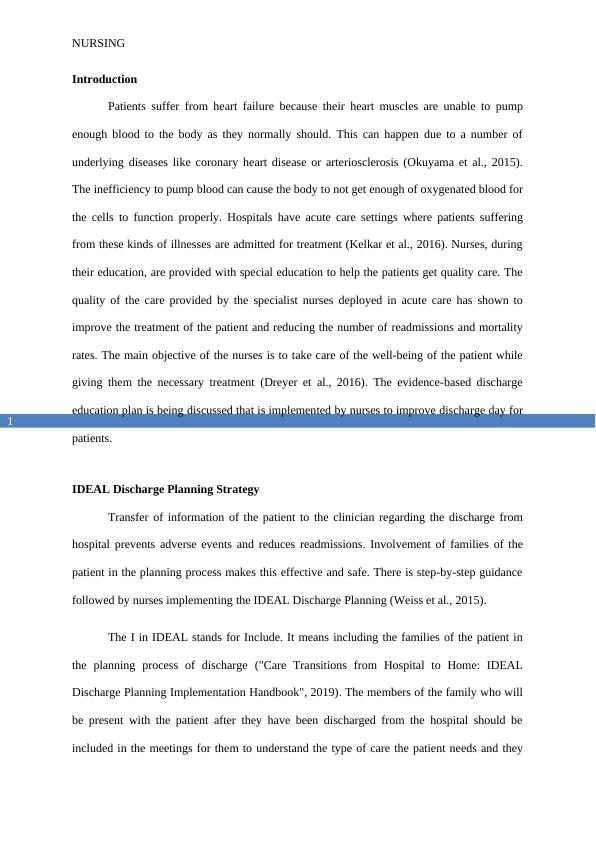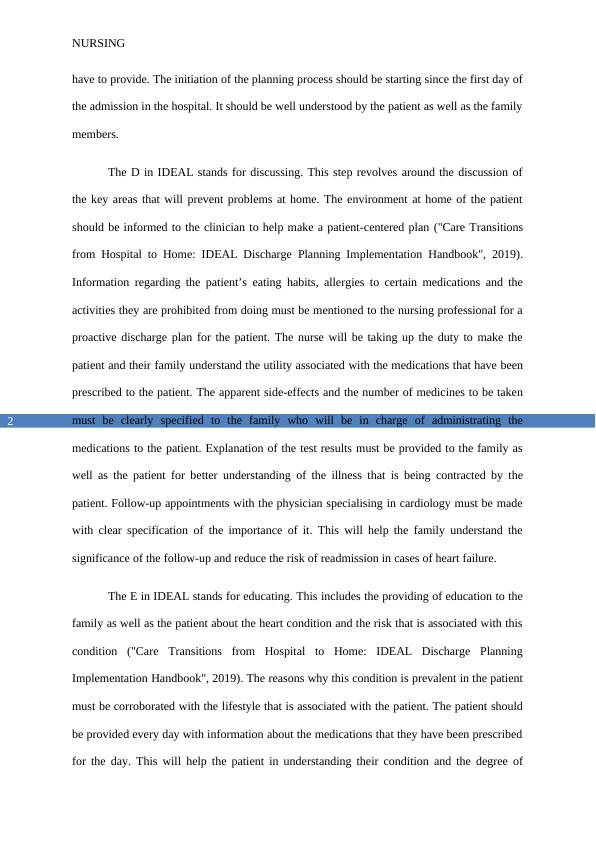Article | EVIDENCE-BASED PLAN FOR HEALTHCARE
Develop a nurse-run outpatient heart failure clinic to improve discharge education and reduce readmissions within 30 days of discharge.
7 Pages1774 Words46 Views
Added on 2022-10-09
Article | EVIDENCE-BASED PLAN FOR HEALTHCARE
Develop a nurse-run outpatient heart failure clinic to improve discharge education and reduce readmissions within 30 days of discharge.
Added on 2022-10-09
ShareRelated Documents
End of preview
Want to access all the pages? Upload your documents or become a member.
Developing a Care Coordination Program for Patients with Congestive Heart Failure
|4
|730
|272
Evidence Based Nursing Research on Home-Based Health Care Involvement in COPD
|6
|1607
|264
Readmissions Caused by Failures in Communication
|5
|704
|47
Transition of Care in Nursing
|11
|2710
|303
Decreasing Heart Failure Admissions
|8
|1980
|212
Identify a cardiac or respiratory issue
|3
|852
|19



